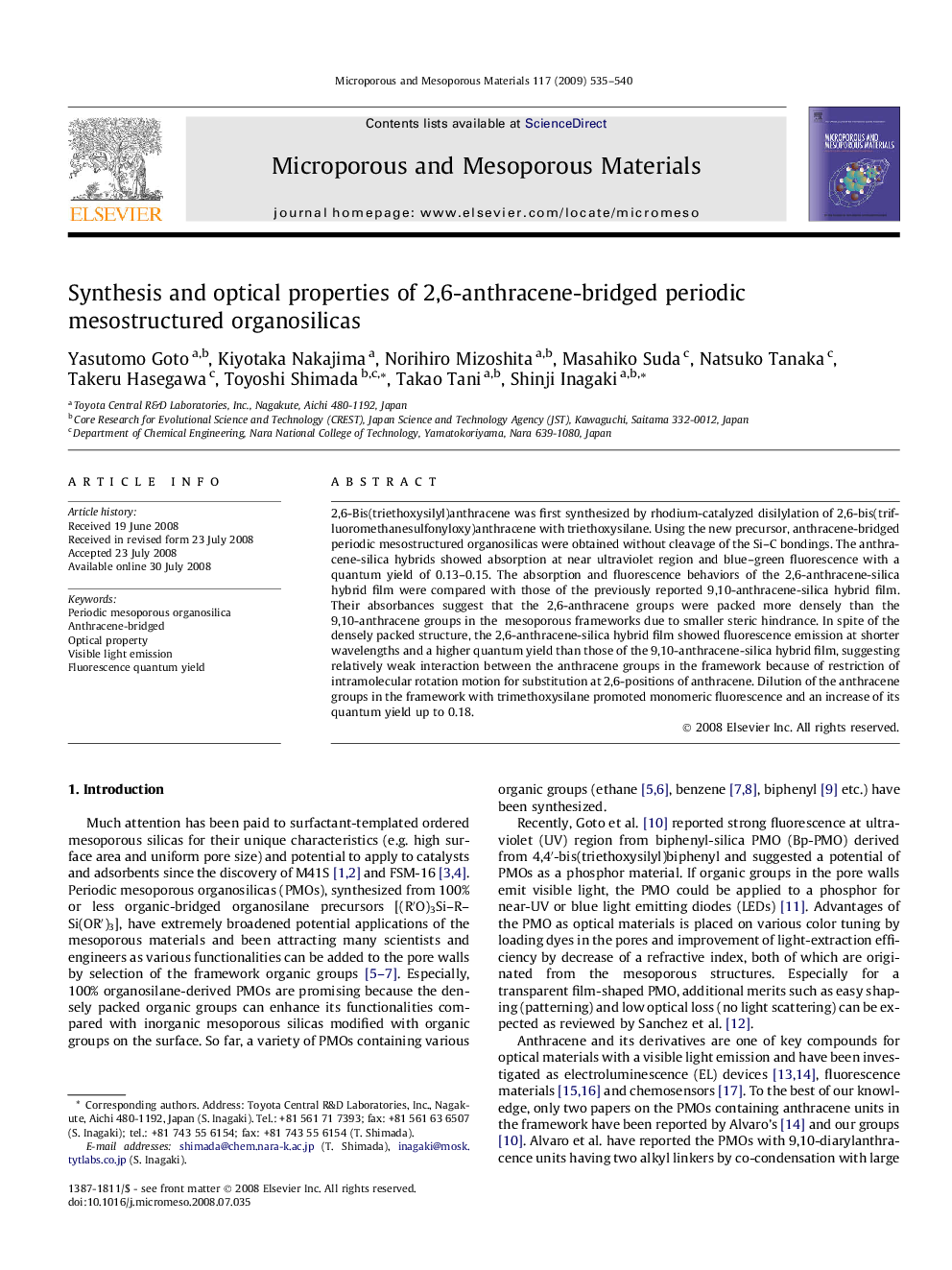| Article ID | Journal | Published Year | Pages | File Type |
|---|---|---|---|---|
| 76595 | Microporous and Mesoporous Materials | 2009 | 6 Pages |
2,6-Bis(triethoxysilyl)anthracene was first synthesized by rhodium-catalyzed disilylation of 2,6-bis(trifluoromethanesulfonyloxy)anthracene with triethoxysilane. Using the new precursor, anthracene-bridged periodic mesostructured organosilicas were obtained without cleavage of the Si–C bondings. The anthracene-silica hybrids showed absorption at near ultraviolet region and blue–green fluorescence with a quantum yield of 0.13–0.15. The absorption and fluorescence behaviors of the 2,6-anthracene-silica hybrid film were compared with those of the previously reported 9,10-anthracene-silica hybrid film. Their absorbances suggest that the 2,6-anthracene groups were packed more densely than the 9,10-anthracene groups in the mesoporous frameworks due to smaller steric hindrance. In spite of the densely packed structure, the 2,6-anthracene-silica hybrid film showed fluorescence emission at shorter wavelengths and a higher quantum yield than those of the 9,10-anthracene-silica hybrid film, suggesting relatively weak interaction between the anthracene groups in the framework because of restriction of intramolecular rotation motion for substitution at 2,6-positions of anthracene. Dilution of the anthracene groups in the framework with trimethoxysilane promoted monomeric fluorescence and an increase of its quantum yield up to 0.18.
